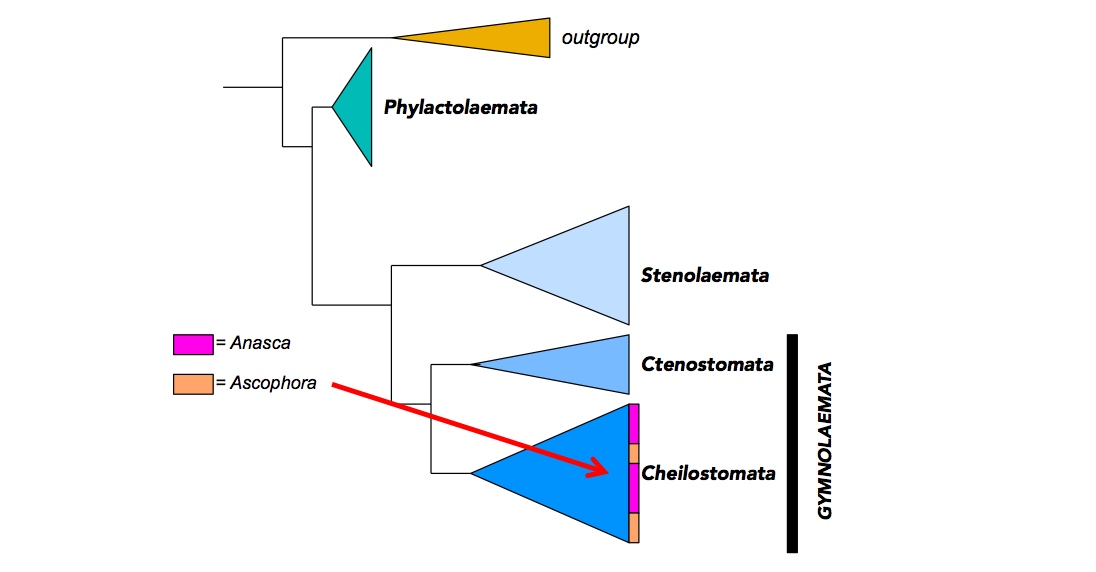Phylogeny
Brooding of larvae is considered to be a derived trait (though possibly has arisen multiple times) and the move towards lecithotrophic larvae was likely an important driver of diversification in the Cheilostomata by increasing chance of allopatric speciation (Taylor 1988). However, in a maximum parsimony ancestral state reconstruction, Waeshcenbach et al. (2012) deemed the likelihood of ancestral planktotrophic and lecithotrophic larvae to be equal. This being said, there is a slough of morphological and developmental evidence to support the derivation of lecithotrophy from planktotrophy, which is the case for a number of other marine phyla (Jeffery & Emlet 2003; Hart et al. 1997)
While cheilostomes have traditionally been grouped into Anasca (flexible frontal membrane over skeleton) or Ascophora (calcified, inflexible frontal shield),with the Ascophora being derived from the Anascans through the development of an internal sac (ascus) (Waeshcenbach et al. 2012). However, a series of analyses (Hao et al. 2005; Tsyganov-Bodounov et al. 2009; Knight et al. 2011; Waeshcenbach et al. 2012) have shown Ascophora to be polyphyletic.
Phidoloporidae are phylogenetically unresolved due to some morphological exceptions in a few genera to the general occurrence of a beaded or toothed distal rim of the primary orifice (Tilbrook et al. 2001; Tilbrook 2006).

|
|
Phylogeny of Bryozoa. Adapted from Waeschenbach et al. (2012). |
|